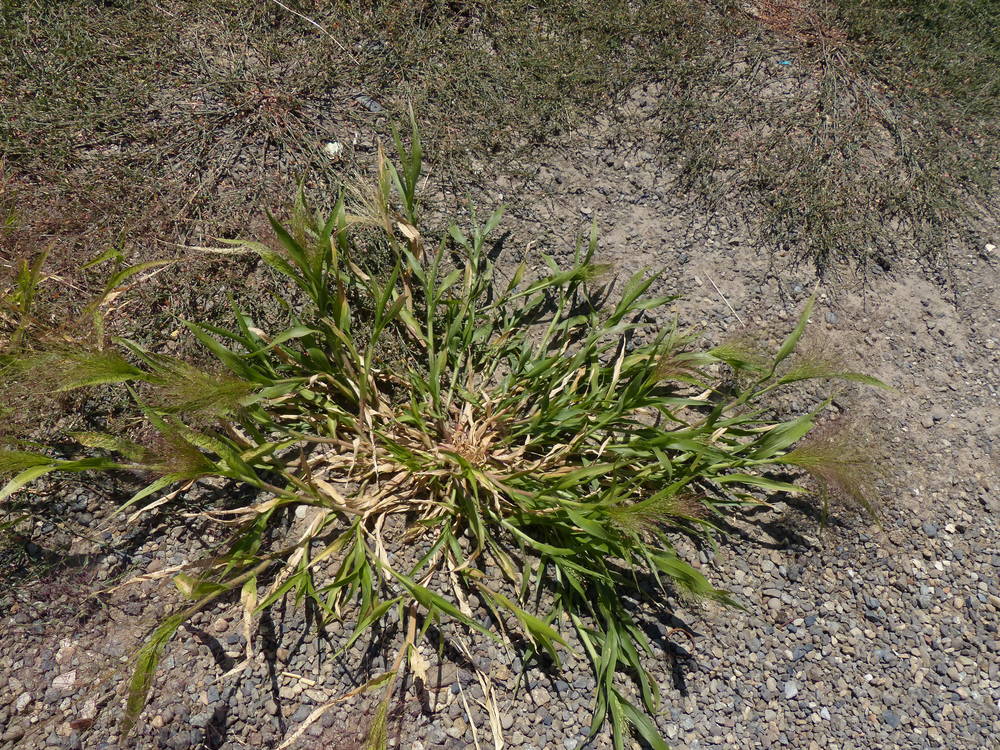Panicum amarum
Panicum
panic grass, witchgrass
cauline and basal, not forming an overwintering basal rosette;
ligules membranous with cilia;
blades flat or folded, glabrous to spreading pubescent.
terminal and often axillary panicles;
disarticulation below the glumes, sometimes at the base of the upper florets.
dorsiventrally compressed, sometimes subterete or laterally compressed, 1–8 mm; awnless.
unequal; ours glabrous to scabrous;
lower glumes absent to almost as long as the spikelets, 1–9-veined;
upper glumes approximately as long as the spikelets to much longer, 3–13(15)-veined, membranous.
smooth.
sterile or staminate; the lower lemma similar to the upper glume.
bisexual; the upper lemma hard and leathery, usually shiny, glabrous, usually smooth;
margins involute and usually clasping the palea.
striate, rarely transversely rugose.
3.
Panicum amarum
Panicum
Tropical and warm-temperate regions. Approximately 500 species; 4 species treated in Flora.
Panicum species are easily confused with Dichanthelium, hence the inclusion of the latter genus in the key below. Panicum species are warm-season grasses that use C4 photosynthesis, while members of the genus Dichanthelium, formerly placed in Panicum, are cool-season grasses that use C3 photosynthesis.
Barbara Wilson, Richard Brainerd, Nick Otting
- Local floras:
CA,
OR,
WA
- Local Web sites:
CalFlora,
CalPhotos,
Flora NW,
PNW Herbaria
WildflowerSearch
iNaturalist (observations)
USDA Plants Database
- LBJ Wildflower Center
- SEINet
- Plants of the World Online
- Encyclopedia of Life
- Wikipedia
- Google Image Search


